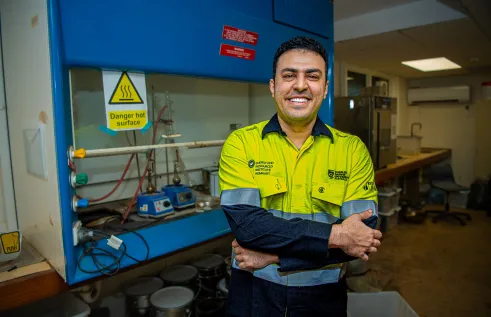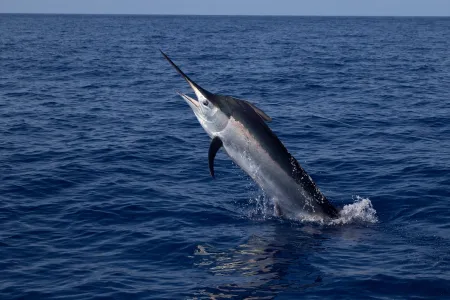News
Top End anglers get behind tracking the world’s fastest fish
Top End anglers are being called on to help Charles Darwin University (CDU) researchers track one of the world’s most iconic and sought-after sports fish, the billfish.
The new research project in the Territory, led by CDU Lecturer in Qualitative Zoology Doctor Keller Kopf and CDU - Australian Institute of Marine Science PhD student Matt Hammond, aims to learn more about how billfish move and why Northern Australia seems so abnormally productive for certain types of billfish.
The saltwater predatory fish, known as billfish, can be found in waters off Dundee Beach and Groote Island is famous for its sword-like facial protuberances as well as its impressive speed and size, a Black Marlin can reach up to 700kg.
As a part of the project, the CDU research team, is hoping to attach tags and track 25 billfish in waters around Northern Territory and they’ve called on the Territory’s strong fishing community, with knowledge about billfish, to help catch and tag the fish.
“There’s juvenile billfish in these waters all year long, and that’s really unique. With some luck, we are hoping we can track up to 25 fish to see where they are going and what they’re getting up to,” Mr Hammond said.
“I have my work cut out for me because it means getting 25 of the ocean’s most powerful fish on the end of a line and back to the boat.
“They are notoriously difficult to catch. It’s considered an achievement just to get a Marlin or a Sailfish to take an interest in your bait.”
“The billfish’s size and speed make them sought-after trophies for anglers, which means there is potential scope to develop sustainable fisheries tourism in the Top End.”
Mr Hammond will trial two types of tags, acoustic and satellite when tracking and tagging the fish.
The acoustic tags emit a signal which needs to be picked up by stationary buoys that are deployed in common billfish hotspots.
“The tags can last up to ten years, so should provide some quality data on the effect of the catch, surgery, and release upon the target fish,” he said.
Mr Hammond said while it was a trophy fish, there was not a great deal known about the movement and ecology of billfish in Northern Australia.
Along with the billfish movement and ecology, Mr Hammond hoped to learn more about how the tags work and the effect they have on the fish.
These tags store data on the fish’s location, depth, and movement. Within six to 12 months the tags automatically release and float to the surface where they transmit the data to a satellite.
The project is a collaboration with citizen scientist recreational fishers, the Department of Industry Tourism and Trade, the Australian Institute of Marine Science, the Amateur Fishermen’s Association of the Northern Territory, and Fisheries Ecologists.
It is supported by funding from the Fisheries Research and Development Corporation on behalf of the Australian Government and by the Northern Territory Recreational Fishing Grants Scheme.
The team will start the tracking process in the 2022 dry season.
Related Articles

Conservation planning ‘good for biodiversity and business’
The Northern Territory’s investment in solar and wind energy production needs to benefit people and the planet, but new research highlights critical pitfalls in planning.
Read more about Conservation planning ‘good for biodiversity and business’
Where rubber meets the road: Old tyres are key to building tougher roads
Almost half of the Northern Territory’s worn-out tyres end up in landfills – with the rest exported interstate for recycling – but a study led by Charles Darwin University (CDU) is repurposing the discarded rubber to build stronger, sustainable roads that meet the NT’s unique needs.
Read more about Where rubber meets the road: Old tyres are key to building tougher roads
Social media subjecting Black women to radicalised digital policing
Influencers use oppression, manipulation and weaponisation to police Black women on social media, according to new research uncovering the entrenched nature of digital racism.
Read more about Social media subjecting Black women to radicalised digital policing
